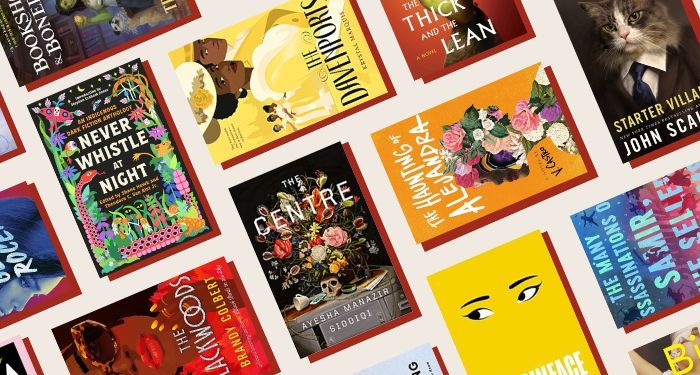Romance book covers have become an essential part of what draws readers into a story before a single word is read. Whether browsing online or flipping through paperbacks at a bookstore, it’s the cover that makes the first impression. In the world of romance, which is an emotional genre where relationships come to life on page — we need the cover to draw you in and say this book has a lot of passion, chemistry along with that promise for heart-wrenching or touching moments. The hands, the kissing lips, are just some of the images seen on these romances that help create an idea about what to expect with a book.

Why Romance Book Covers Matter
Romance is the highest-selling genre in publishing, accounting for billions of dollars annually. Readers of romance novels are passionate, loyal, and discerning. For many, the cover is not just artwork—it’s a cue about the emotional tone, heat level, subgenre, and even the time period of the story. A well-designed romance book cover signals professionalism, builds expectations, and compels readers to pick up the book—or scroll no further.
Romance book covers also function as silent communicators of tropes. For example:
- Shirtless man with a six-pack = steamy or erotic romance.
- Pastel color palette with illustrated characters = sweet or romantic comedy.
- Regency gowns and lush backdrops = historical romance.
Readers quickly recognize these visual clues, allowing them to find stories aligned with their preferences.
Subgenres and Their Cover Styles
But Science says romance is not a universal genre. Between all the sub-genres lies a vast span of expectation as far as what is expected to be on the cover. Photo of how various latino romance boats and their cover elements:
|
These visual cues are essential for grabbing the right audience and ensuring the book’s theme is immediately recognizable.

Elements of an Effective Romance Book Cover
A romance book cover is a visual representation of the story, and at such; it needs to merge aesthetic with precision in an oversaturated marketplace. These are the elements of a cover, which are what make romance covers effective:
1. Imagery
Illustrated VS Photographic covers : These will be able to slot you in your demographic. Now both of these illustrated covers are getting super popular, especially with rom-coms and YA romance. This photograph-based style is perfect for hot or other kinds of contemporary romance. The way characters acted towards each other, the way there was minimal speech and what speech there was used facial expressions, the setting seemed to convey even more emotion.
2.Typography
The font speaks volumes about what kind of book it is. Transformed Script Written: And will deliver grace feel, new and intimate Block Letters: Shrink with strength and power modernity. You also have to position font appropriately, so that the text could be read even as a thumbprint size such is the case on digital marketplaces.
3.Color Palette
Colors trigger emotion. Cool- blues, purpleCool hues resemble ice, cold; are perceived as depressing or mysterious. You will almost always pick pastel colors for a light romance, and darker palettes if it is a paranormal or mature theme.
4.Branding Consistency
Series – Covers needs to have consistent layout and design (e.g. colour coding) to create a brand identity. Typically readers end up grabbing a series book with other books by the cover.
The Evolution of Romance Book Covers
The world of romance covers has changed drastically over the decades. Illustrated covers became the standard during the 1970s and 80s, featuring covers often in a notorious “clinch” pose (muscle-bound hero holding swooning heroine). The 80s — Fabio, the romanceland icons.
In the 2000s, covers started to use a photograph and usually only showed men with shirtless. Especially in the erotic and paranormal romance genres. The 2010s were also notorious for the return of graphic covers, capitalising on an increase in both comedies and romances — not to mention a hunger from readers looking for something different.
Diversity and inclusivity have become important things in the modern era. You can now see characters on covers that represent the wide spectrum of romance readers — different races, physical builds, sexual orientations and abled bodies.
Self-Publishing and Indie Authors: The Rise of Custom Covers
Indie authors have transformed the publishing landscape, and romance book covers are a key component of their success. Many self-published authors invest in professional cover designers or use platforms like Canva or BookBrush to design their own.
A compelling cover can make or break a self-published title, especially in digital marketplaces like Amazon Kindle. Because readers often make split-second decisions based on covers, indie authors must create visual branding that rivals traditional publishers.
Pre-made cover templates are also popular—offering budget-friendly solutions while still maintaining professional design. However, custom covers allow for uniqueness and alignment with story themes.
Hiring a Designer vs DIY
If you’re an author debating between hiring a designer or designing your own romance book cover, consider the following:
Hire a Designer If:
- You lack design skills or access to professional tools.
- You want a unique, branded design.
- You’re releasing a series and want cohesive covers.
DIY If:
- You have a background in design or a strong visual eye.
- You are working with a very limited budget.
- You’re testing market appeal with early drafts or novellas.
Remember, your cover is your book’s billboard. Poor design can deter readers no matter how great the writing inside.
Romance Book Covers in the Digital Age
With most readers shopping online, romance book covers now have to work even harder in thumbnail form. Amazon, Goodreads, and BookTok trends influence buying behavior. A romantic cover that catches the eye in a 150-pixel thumbnail has more chance of turning a click into a purchase.
Book covers also have a second life on social media. Aesthetically pleasing covers are shared more often, get featured in Bookstagram posts, and earn real estate in YouTube reviews. Designers often create additional assets—like matching audiobook covers and promotional graphics—to maximize online visibility.
Common Mistakes to Avoid
- Cluttered Design – Too many elements can confuse the eye. Clean and simple wins.
- Poor Font Choices – Hard-to-read fonts, especially in thumbnails, kill visibility.
- Stock Photo Overuse – While stock photos can be budget-friendly, overused images look unoriginal.
- Mismatch with Genre – A rom-com with a dark, moody cover will alienate the target audience.
- Low Resolution – A pixelated or blurry image gives off an unprofessional vibe.
How to Choose the Right Romance Book Cover
- Know Your Audience: Are your readers fans of steamy romances, sweet clean love stories, or LGBTQ+ narratives?
- Study the Market: Browse bestsellers in your subgenre. Note trends, common elements, and gaps.
- Invest in Quality: Even if you’re on a budget, consider the return on investment a professional cover can bring.
FAQs About Romance Book Covers
Q1: What makes a good romance book cover?
A good romance book cover captures the emotional tone of the story, is visually appealing, and communicates the subgenre through imagery, typography, and color.
Q2: Should I use illustrated or photo covers for romance?
It depends on your subgenre. Photo covers work well for steamy and dramatic romances, while illustrated covers are ideal for romantic comedies and YA.
Q3: Can I design my romance book cover myself?
Yes, if you have design experience and use the right tools. But for professional results, hiring a designer is often the better choice.
Q4: What are the dimensions for an eBook romance cover?
Amazon recommends a ratio of 1.6:1 (typically 1600 x 2560 pixels) for Kindle eBooks. Always check platform-specific guidelines.
Q5: How much does it cost to get a romance book cover designed?
Prices vary widely. Pre-made covers can cost $50–$150, while custom covers by experienced designers range from $250–$1,000 or more.
Conclusion: Love at First Sight Begins with the Cover
The cover of romance books are like conceits of love stories, a vessel on which we sail in the stormy sea emotionlion. A good cover, whether smut or stick figures (or anything in between), is thunderstorming to get weather inside and whisper sweet lies: this will make you tickle deep.
Optics have become an especially vital consideration in a fiercely competitive landscape where people literally do not have time to read and absorb work, so authors should make no bones about the importance of RWD. A great cover not only helps to sell the book, but creates its own love story — hatched with that very first glance.




